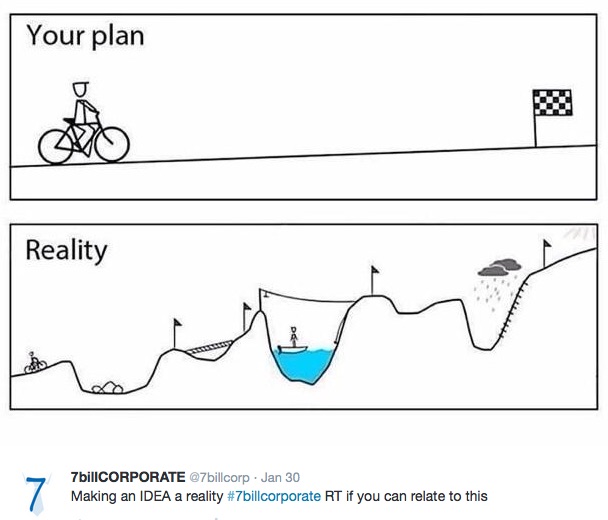What's Missing?
/
When we are looking for patterns, trying to understand or discover customer needs, trying to learn something in general, we tend to look for what’s there. We look for what we see, hear, touch, smell, taste – for what we observe. This can take time and focus. Sometimes we have to look at the negative space as well, the empty space around the ‘thing’ we are observing. Negative space is used a lot in art and optical illusions. For instance, look at this key, the logo for the American Institute for Architects in New York:

It looks like a key, right? But look at the cuts in the key’s blade – it’s the NYC skyline! If you took a quick look, you might not notice that it’s a skyline, let alone NYC’s. So when we are looking, it’s important to look at the equivalent of the ‘negative space’ around the ‘thing’ we are observing.
But what if we ‘looked’ for what’s NOT there? What if we looked for what was missing? This sounds strange – how can you look for something that’s not there? Maybe we’re not actually ‘looking’ in the literal sense, but we are trying to see what is missing – what should/could/ought to be there but isn’t. In Episode 7 of Serial*, one of the lawyers says, “That’s what we’re not seeing.” Those few words stopped me in my tracks.
What we are NOT seeing! We are so used to looking and making sense of what’s there that we rarely stop and look at what’s NOT there… at what’s missing. Ok, so you can’t see something that’s not there – but maybe you can! Maybe you can ‘see’ what is normally, typically, usually there in a certain situation or circumstance. Its absence should raise a flag. If you question and examine, you’ll ask why something isn’t there, or isn’t there in a way it should be. Ask Why. Why didn’t this happen? Why wasn’t that there? Why wasn’t that used? Why wasn’t that tightened? Why wasn’t that next to this?
So the next time you’re observing to learn – to build a new product or service or feature, to understand a customer segment or need – ask yourself what’s missing. Ask yourself what should be there that isn’t and ask why. Who knows what you will discover!
*If you haven't listened to Serial yet, you must! Aside from the 'entertainment' value which is very high, the  lessons on looking, observing, over-looking, ignoring, missing are applicable to so much of our lives - personally and professionally.
lessons on looking, observing, over-looking, ignoring, missing are applicable to so much of our lives - personally and professionally.
Have you figured out what’s missing in the picture of the robots at the top? Do you want to know? If yes, keep reading. If no, STOP!
(Look at Robot Robbie's center graphic with the gears; there's only 1 red ‘canister’ on the right).







